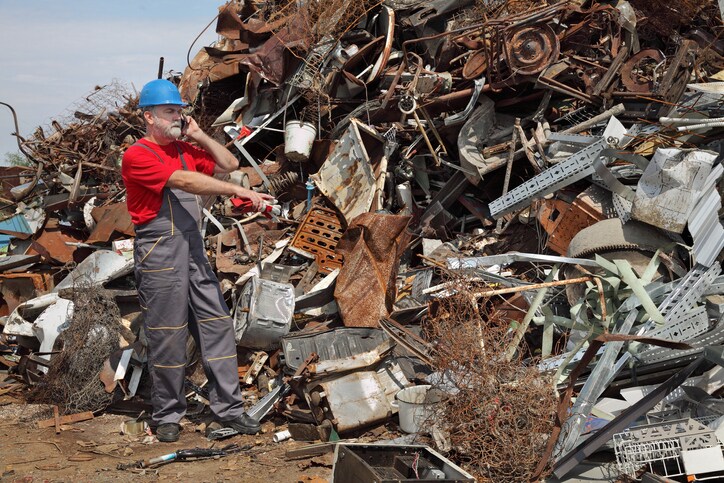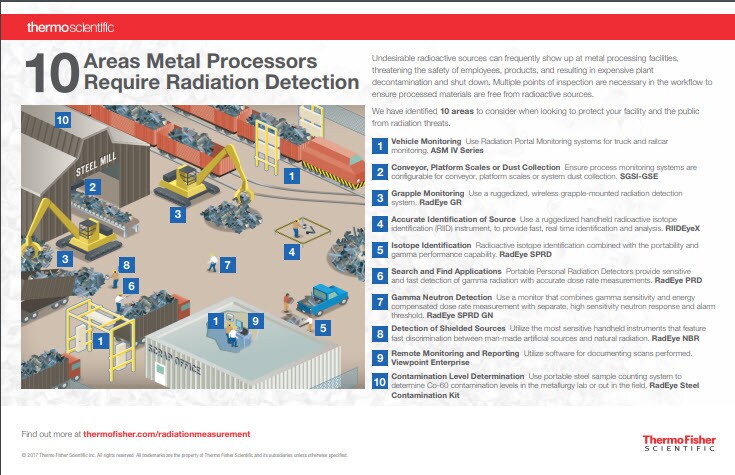 When you think of radiation threats, you probably picture a nuclear power plant in your mind. However, there could be radiation threats lurking in those giant piles of crushed cars, mountains of rusted metal, and mounds of miscellaneous appliance parts made of a variety of metals that are stacked sky high at local junkyards and metal recycling facilities.
When you think of radiation threats, you probably picture a nuclear power plant in your mind. However, there could be radiation threats lurking in those giant piles of crushed cars, mountains of rusted metal, and mounds of miscellaneous appliance parts made of a variety of metals that are stacked sky high at local junkyards and metal recycling facilities.
What’s the worst threat that could happen at a scrapyard? Maybe a cut or infection from sharp pieces of rusted metal? A radiological threat may have never crossed your mind. But it should have.
The reason for the radiation threats is that we may be unsure as to where those pieces of metal came from. Were they from a medical facility that utilized radiation equipment? Medical diagnostic and monitoring equipment use radiological sources. Industries that make certain batteries, non-stick cookware, wrinkle-resistant fabrics, reflective signs, paper products, and many, many other products utilize radioactive substances and equipment that contains radioactive sources. Academic and scientific institutions use nuclear materials in their work. There is a wide range of industries and a wider variety of applications that utilize these sources.
And if those items touch other items, piles of metal scrap can become contaminated. Those orphan sources, the sealed sources of unwanted radioactive material, can be dangerous because they can inadvertently contaminate any part of the scrap metal recycling stream. In fact, undesirable radioactive sources frequently show up at metal processing facilities, threatening the safety of employees, products, and resulting in expensive plant decontamination and shut down.
Last year we wrote about the Reasons Why Metal Scrap Yards Need to Monitor For Radiation. We mentioned a stainless processing facility that found 145 nuclear items in scrap. Items such as decorative tissue box holders, metal tea tins, cheese graters, elevator floor numbering buttons, rebar, patio furniture, shovel blades, fashion belts, etc. have been discovered manufactured from Co-60 contamination metal.
How can we keep these orphan sources from entering the waste stream, contaminating other scrap, utlimately getting into the hands of consumers, and threatening their health?
Multiple points of inspection are necessary in the workflow to ensure processed materials are free from radioactive sources. When trucks are delivering scrap to a recycling facility, the shipment, as well as the truck itself, should be monitored to make sure they are not contaminated. How about the workers at the gate? They should be monitored in case they came in contact with the material or the truck at the gate. If scrap manages to get into the facility, there should be technology at the facility to detect it. There are Radiation Detection & Measurement devices that can detect, localize, identify, and measure radioactivity in almost any scenario.
We have identified 10 areas that metal recycling facilities should be paying attention to when it comes to protecting the public from radiation threats. Download this infographic for a quick run through of where scrapyards should consider monitoring for radiation.

Download the Infographic: 10 Areas Metal Processors Require Radiation Detection






Leave a Reply